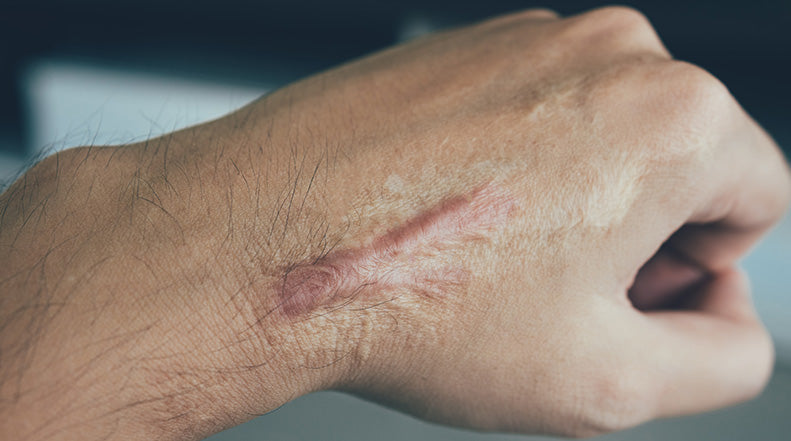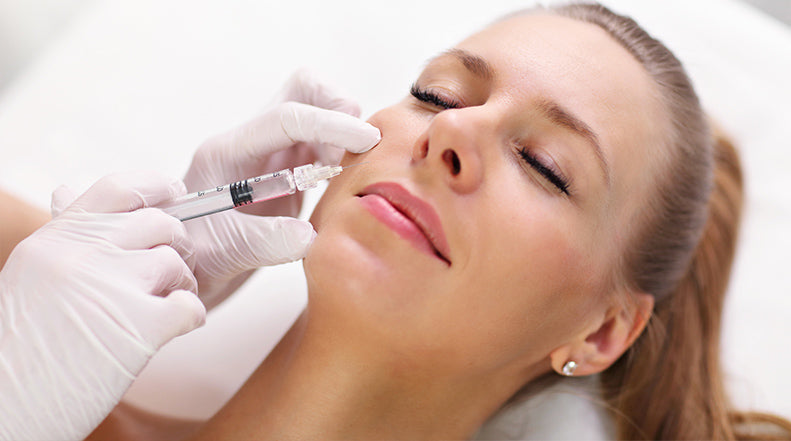What You Need to Know About Open Heart Surgery Scars

Open heart surgery is an operation that requires opening the chest wall to repair a fault in or damage to the heart muscle, its arteries or valves. These surgeries treat complications of ischemic heart disease via bypass surgery of blocked arteries, correct congenital heart disease, or treat other heart diseases such as endocarditis, mitral valve prolapse, and many more. It’s clear that open heart surgery is a major operation, which increases the risk of significant scarring. It may seem daunting to have to recover from such a major surgery and worry about how to manage scars afterwards. Which is why we’re explaining exactly what to do about open heart surgery scars so that you can focus on a safe and healthy recovery.
AFTER SURGERY CARE
The first phase of heart surgery recovery can last from 6 to 8 weeks. When you're released from the hospital, follow the set of instructions for post-surgery care exactly. As with any surgical procedure, open heart surgery requires incision care to avoid infection and minimize scarring.
You most likely know that keeping the incision area clean and dry is important to prevent infection or inflammation. But did you know that both infections and inflammation can have a negative effect on scar appearance? According to a publication in the Journal of Cutaneous and Aesthetic Surgery, bacteria have the ability to induce excessive collagen production in the scar tissue, resulting in keloid or hypertrophic scar formation. For both health and appearance, follow the doctor’s orders regarding wound care.
In addition to keeping the incision clean and dry after open heart surgery, there are several things you should avoid to help your incision heal and speed your recovery. First, avoid smoking for at least two weeks after the surgery. Smoking reduces the amount of oxygen reaching the skin, and has a negative effect on wound healing.
You’ll also want to avoid exposing your scar to sunlight. Unprotected scars are prone to developing hyperpigmentation, which is the darkening of an area of skin due to an excess or irregular production of melanin. Once formed, this brown discoloration may be permanent. If avoiding sun exposure is not possible, apply a broad spectrum SPF 30 sunscreen.
Finally, avoid applying pure vitamin E capsules or any other topicals to your scar unless approved by your doctor. Clinical studies have shown that pure vitamin E can actually make scar appearance worse by causing irritation and inflammation. One study examined the effects of vitamin E in 80 patients with hypertrophic scars. After two months, it was found that almost one-third of the patients reported local reactions to the vitamin E and, in some cases, topical vitamin E even worsened the cosmetic appearance of scars. (Can Fam Physician. 2006 ) Similarly, other topical products with plant-based ingredients are more prone to cause sensitivity and irritation than bioinert products such as silicone.
SIZES AND TYPES OF OPEN HEART SURGERY SCARS
The size of your open heart surgery scar depends on the type of procedure that was performed. According to HeartValveSurgery.com, if you have a minimally invasive procedure (i.e. mini-sternotomy), the scar size may only be three inches. However, if your procedure requires the sternum (breastbone) to be broken, the incision is typically much larger. The scar can be up to 8 inches long for women, and up to 10 inches long for men.
While many scars will remain flat and may fade over time, there is a possibility for scars, especially those on the chest area, to develop poorly. Raised, discolored scars can result if the body produces too much collagen during the wound healing process. The result can either be a hypertrophic scar or a keloid. Both are raised and red, but the feature that distinguishes keloids from hypertrophic scars is their growth past the original scar boundary. These scars are raised, turn from red to brown, and often have a lumpy appearance. Left untreated, keloid scars can continue to thicken and grow indefinitely. Skin with darker pigmentation is more prone to keloid formation.
According to a publication in the Journal of Cardiothoracic Surgery, chest hypertrophic scar and keloid formations after open heart surgery frequently occur. The authors state that stretching tension is clearly associated with keloid generation, as keloids tend to occur on high tension sites such as the chest region. There are numerous treatment methods for keloids, including surgical excision, intralesional steroid injection, radiation therapy, laser therapy, silicone gel sheeting, and pressure therapy. However, not all of these methods are effective. For example, the recurrence rates after surgical excision as a single treatment are up to 80 to 100%.
On the other hand, clinical studies have shown that silicone gel and sheeting are considered the first-line therapy to manage and minimize scarring, including scars after open heart surgery. In fact, silicone gel products are the only topical treatments recommended by the scar experts who create scar treatment guidelines for other doctors.
THE BEST TREATMENT FOR OPEN HEART SURGERY SCARS
As mentioned above, silicone gel and sheeting are considered the first-line therapy to manage and minimize scarring. While there are several brands of silicone gel products on the market, NewGel+ offers the widest variety of silicone scar treatment products available. Our silicone strips, sheets, and gel are perfect for open heart surgery scars as well as scars resulting from any other type of abdominal or back surgeries.
Clinical studies have shown that silicone gel and sheeting are considered the first line therapy to manage and minimize scarring.
If you’re searching for silicone gel sheeting in drugstores, you may notice that these sheets are only a few inches long. Since open heart surgery scars can be up to 10 inches long, multiple sheets would have to be overlapped to cover longer scars. One box doesn’t go very far! NewGel+ has a variety of lengths to provide plenty of options for the coverage you need, and strips can be cut to fit whatever size scar you have.
Since open heart surgery can be an emotional and stressful procedure, let NewGel+ handle your scar management needs. Find your perfect match by browsing our product collection now.




Comments